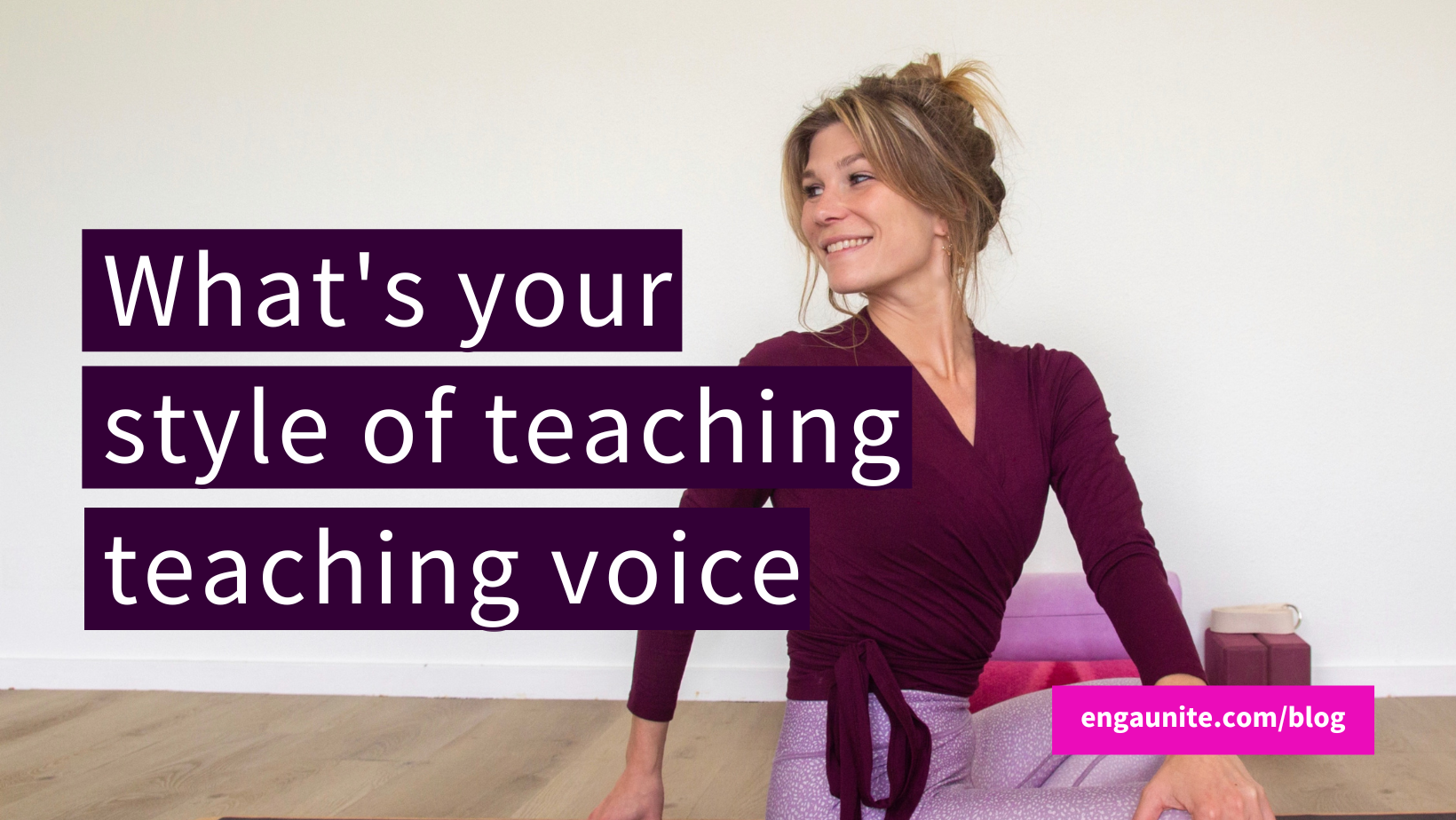‘Find your voice’, ‘Use your voice’, ‘Teach as your own authentic Self’. In the world of yoga, you may have heard these expressions before. But what do they really mean? And what’s your style of teaching voice? In this blog let’s explore the usage of communication in the yoga room, different styles and the importance of developing your own authentic teaching voice.
What’s your teaching voice?
Your teaching voice goes further than the tone, volume, or the way you sound when you speak. It also deals with your word choice, communication style, and how comfortable you feel when speaking staying true to your personality: your authentic Self. Using your voice and teaching as your authentic Self means you teach without trying to be like anyone else. Teaching as your true self means you don’t try to hide your personality, values, background, natural behaviour or your natural way of speaking, even if you teach yoga in a foreign language.
Every teacher has their own unique and personal way of teaching and approaching their students. This depends on the teacher’s knowledge, experience, personality and preferences, and also on the types of people they teach and work with and the ability to adjust their communication accordingly.
Teaching yoga can be quite challenging, especially if you’re teaching in a foreign language. As a teacher, teaching in a foreign language, you may be tempted to imitate the way our own teachers speak, to use their cues, terms, words and expressions or even copy their accent. This copying behaviour means that you act in a way that doesn’t feel very natural to you, which causes you to lose your authenticity. When you behave and act like somebody else, you are repressing and hiding your own Self, which can harm your self-esteem and feel extremely exhausting at times.
How defining and understanding your voice improves your teaching
When you use somebody else’s voice to communicate with your students, it’s quite likely that you won’t get the message across, simply because it’s not really you who is speaking. But when you know and use your own teaching voice, effective communication is granted.
Accepting yourself and owning your style of teaching voice offers multiple benefits. Let’s have a look at a few of them:
Effective cueing
Effective cues are the ones that you know work and are easily understood by your students, but also roll off your tongue, without having to think about them. By exploring and deciding on cues that make sense to you and your students, it’ll not only be easier for you to remember them, it also offers consistency. This consistency allows you to be less in your head, thinking of the words to use, and instead guide your students through their practice while staying focussed and present with their experience.
Improve student-teacher relationships
Genuine communication encourages healthy relationships. Using your own voice and showing up as your authentic self, will show your students that they can be themselves too. Especially in yogic environments, where unfortunately, competition can be very high, this transmission of self-worth is extremely comforting. As an educator, set an example and allow yourself to be human; laugh, play, and make mistakes. All of this results in that your students will feel at ease with you, strengthening your student-teacher relationships. At the same time, seeing that you can be yourself, will encourage them to develop their own sense of Self, too.
Adjusting your language to your students needs/experience with yoga
Every student comes to yoga with different needs and in search for different ‘solutions’ to the obstacles they’re facing in their lives. Their needs vary from physical injuries, emotional burden, mental health to challenging situations in their private life. As a teacher, you can’t always know everything about a student, but it’s important that you can adjust your language and your communication style to the needs they have. The more you can empathise and acknowledge your students, still speaking and sounding like yourself, the deeper your connection with your students will be and the more progress they’ll make in their practice.
How do you find your style of teaching voice?
At the beginning of your teaching journey you may lack practice and confidence feeling uncomfortable with your teacher Self. Especially, when you’re teaching in a language that’s foreign to you. It may be that you’re unfamiliar with words, terms, expressions and cues, but all of these things you can learn. With time, practice, continuing education, support, constructive feedback and discipline, you’ll learn to own your style of teaching voice little by little and finally start feeling more confident, thriving in your yoga teaching career.
So, let’s get started by defining your voice and understanding what you need to further develop it!
Take the quiz: What’s your style of teaching voice and follow the steps I’ve laid out for you to speed up your progress and work towards the goals you have for your international teaching career.


